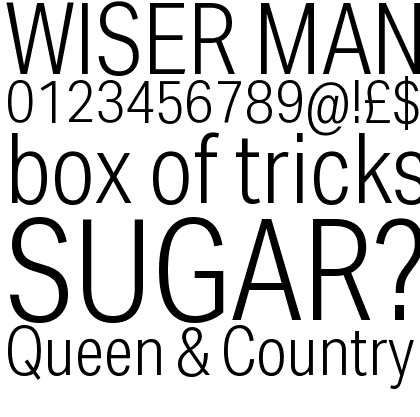

In 2001 Lange helped Berthold complete the AG series with the additions of AG light italic, Super Italic, light condensed, condensed, medium condensed, extrabold italic, light extended italic, extended italic and medium extended italic. Lange was instrumental in developing the Akzidenz-Grotesk program at Berthold in the 1950s and 1960s. This is the one famous font among the most demandable typefaces and it has been used in an extensive range by designers. Aktiv Grotesk is a grotesque sans-serif typeface released through. There is also a model known as neuzeit grotesk. This typeface is very suitable for logo and web designing purposes. It has been described as a Helvetica killer. This ultra-modern font is designed in 1957 by Max Miedinger. Under the direction of Günter Gerhard Lange, Berthold added AG Medium Italic (1963), AG ExtraBold (1966), AG Italic (1967), AG ExtraBold Condensed & Italic (1968), AG Super (1968). Helvetica Font is a famous typeface that is belonging to the largest Sans-serif Typeface. In the 1950s Günter Gerhard Lange, then art director at Berthold, began a project to enlarge the typeface family, adding a larger character set, but retaining all of the idiosyncrasies of the 1898 face. The Theinhardt foundry later merged with Berthold and also supplied the regular, medium and bold weights. The font family is made up of 51 fonts including nine weights in. Originally named “Accidenz-Grotesk” the design originates from Royal Grotesk light by royal type-cutter Ferdinand Theinhardt. Neue Helvetica uses a numerical design classification scheme, like Univers. As Neue Haas Grotesk had to be adapted to work on Linotype’s hot metal linecasters, Linotype Helvetica was. The typeface was soon revised and released as Helvetica by Linotype AG. First released in August 2017 as Interface and soon after renamed to Inter UI, to avoid confusion with InterFace. Berthold first published Akzidenz-Grotesk in 1898. Neue Haas Grotesk was to be the answer to the British and German grotesques that had become hugely popular thanks to the success of functionalist Swiss typography.


 0 kommentar(er)
0 kommentar(er)
